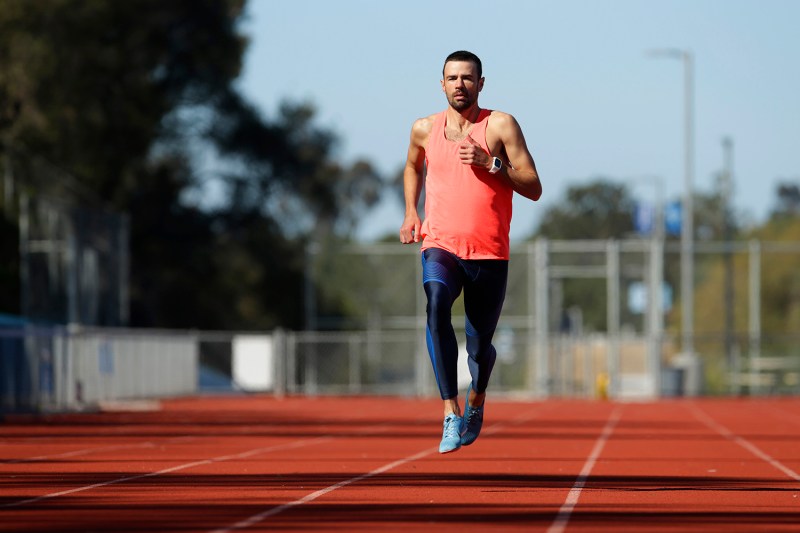
Even if you’re too modest to allow yourself to self-identify as a runner despite running here and there to get in shape, or if you’ve never even run more than a few steps to catch a subway, cross a road, or when being dragged by your dog in pursuit of a squirrel, you’ve still likely heard of the marathon. After all, the famed race distance makes its way into pop culture at least annually each April when the Boston Marathon rolls around, and often numerous other times during the year. If you’re a seasoned runner or have friends who are, you’ve maybe even flirted with the idea of undertaking the impressive feat of physical endurance yourself, or perhaps you’ve earned your coveted membership card to the exclusive “Marathon Finisher’s Club,” having completed a marathon yourself and feeling the glory of having a finisher’s medal draped over your neck and a shiny heat blanket wrapped around your exhausted body.
Related Guides
The marathon earns the allure it has garnered among novice and experienced runners alike because it’s a true test of physical and mental endurance — a distance to be respected and that earns the finisher respect in return. Marathons are 26.2 miles long and take even the fastest runners more than a couple hours of non-stop effort to complete. Because it’s no easy feat, finishing a marathon is really only possible with dedicated training and adherence to a smart training plan. A good training plan will not only prepare you to achieve your marathon goals — whether just finishing the race, hitting a personal best, or qualifying for another race — but it will also get you to the starting and finishing line healthy and strong.
Ahead, we share how to properly train for a marathon, whether it’s your first attempt at the 26.2-mile distance or a familiar beast that you hope to dominate even more impressively on your next go-round.
What to Consider Before Starting a Marathon Training Program

Since a marathon is a big endeavor, it’s typically not something you should jump into on a whim. Before embarking on a training program, you should consider your availability and your physical abilities. Ask yourself the following questions:
Do I have time?
Unless you’re already running upward of 10 hours per week, any marathon training program will likely be a step up in terms of time demands beyond your current running schedule. You’ll need at least one chunk of time per week — often a weekend, though you can adjust your training schedule to meet your own weekly life schedule — for runs that may be up to three or four hours long. Most training programs have a minimum of five workouts per week, so that’s another thing to consider.
You’ll also need at least 12-16 weeks for your training program, so if you’re going to be doing a lot of traveling for work, have a big vacation scheduled, are getting ready to move, or are preparing for a new baby at home, it might not be the best time to get your formal marathon training underway.
Is my body able to handle the training?
The marathon can be a somewhat elusive bucket-list item for even seasoned runners because having the time, dedication, and physical fortitude to complete the training and make it through the race without quitting or getting injured somewhere along the way isn’t as easy as everyone might hope. Running 26.2 miles is demanding on the body and the training puts a lot of wear and tear on not just your running shoes, but your muscles, bones, tendons, and ligaments, too. An unfortunate number of runners get injured during the course of their marathon training program, and in order to prevent yourself from joining that dreaded club, you need to not only train smart and listen to your body, but ensure your body is fit and strong enough to take on the demands of training. If you’ve recently had an injury, or are an injury-prone runner, you might want to wait awhile and spend some time working with a physical therapist to correct any imbalances and weaknesses first. Along those lines, you should have a bare minimum of six months of consistent running under your belt before you delve into a formal marathon training program.
Is this something I really want to do?
There will be days you don’t feel like dragging yourself out of bed to tackle a long run, but if your relationship with running is already fickle at best, your training program might become too much of a chore to stick with it.
How to Choose a Marathon Training Program
Choosing a marathon training program may sound like a casual, no-stakes, easy decision, but given the fact that you’ll be devoting an average of 16 weeks (four months) into the endeavor, it makes sense to consider the decision carefully. Much like entering a long-term relationship, you want your training plan to be a good fit for you, both in terms of the meshing logistically into your workout schedule availability and your current fitness level and race goals. For example, if you prefer to cross train a day or two per week, don’t choose a marathon plan that has you pounding the pavement on foot every day; there are plenty of solid marathon training plans that incorporate regular cross-training workouts in lieu of an aerobic run. Similarly, if you’re more of a novice runner, don’t choose a Boston marathon-qualifying plan, as it’s likely too aggressive in terms of mileage and target paces.
The main thing to keep in mind when selecting “the right” marathon plan is that it just needs to be right for you. There are many different plans, all looking somewhat different, that have successfully gotten an untrained runner across both the starting and finishing line of the marathon. The best plan for you is an individual decision, and in that vein, if the stock plans you find don’t seem like an appropriate fit for one reason or another, you may be best served hiring a private coach or paying a coach to at least draft up a personalized marathon training plan for you.
With that said, here are some of the main factors to consider when selecting a marathon training plan:
- Your current level of fitness vs. the demands of the plan
- Appropriateness of the rigor of plan with your race goal
- Number of days per week the plan calls for vs. your availability to train
- Duration of the plan in weeks vs. when your marathon is scheduled
- Popularity or proven success of the training plan
- Your injury history vs. the training load of the plan
- Flexibility of the plan
- Compatibility of your training preferences vs. the workout styles used in the plan (tempo runs, track workouts, cross training, etc.)
How to Train for a Marathon

It would be impossible and frankly unsafe to prescribe a one-size-fits-all marathon training program here, so we will share the general steps and then some options for popular, vetted training programs to check out.
The basic steps to train for a marathon:
Build your running base: Before even beginning your formal marathon training plan, develop your endurance by gradually increasing the duration of your runs and your weekly mileage. The general rule of thumb is to only increase your weekly mileage by 10% per week. For example, if you ran 20 miles last week, you should be able to safely progress to 22 miles this week, and just over 24 miles the following week. When you can run six miles or an hour without stopping several days per week, you probably have the minimum fitness level to begin marathon training.
Gradually increase your long run: You’ll have a long run just about every week. This is your primary endurance-building workout that gets progressively longer and closer to the 26.2 mile distance. Most training plans start with a long run of 6-8 miles and work up to 20 miles once or twice before race day. While some advanced marathon training plans may go up to 22-24 miles, only elite plans tend to hit that magic 26.2 mile mark before race day. Don’t worry though; you’ll be physically prepared for the distance on race day even at these shorter distances.
Practice your pacing: Your training plan should include plenty of runs done at goal marathon pace so that you can get a feel for it and train your body to run comfortably at that pace. On race day, the excitement and nerves will tempt your body into falling into a faster pace, but lean on your training — or your GPS! — to make sure you’re locked in on the pace you’ve trained for. Your training should also have workouts that are run faster than marathon race pace to improve your speed and lactate threshold.
Strengthen your body: A good marathon training plan should be balanced and develop your strength as a well-rounded athlete. Make sure you are doing core work, mobility exercises, and strength training doing full-body workouts. Resistance training will help prevent injuries and fortify your body so that it can handle the miles of running. Cross-training is also a great way to get an aerobic workout while using different muscles and reducing the impact of your activity. Low-impact exercises like cycling, swimming, elliptical, rowing, and deep water running can supplement your training and help prevent overuse injuries.
Respect the rest day: A smart marathon training program will have at least one rest day per week or a cross-training day. Your legs need time off to recover and rebound from training. Be sure to take your rest days as scheduled — and when you need additional ones, especially if you feel a niggle or feel worn down from the miles you’ve been logging.
Editors' Recommendations
- After eating a meal, be sure to wait to workout: This is how long you should wait to exercise
- 9 benefits of doing plyometrics workouts no matter how fit you are
- The best workouts for beginners: Your cardio and strength training plan
- This is how many calories you burn on an exercise bike
- An ultra-marathoner tells us the secret to race training




